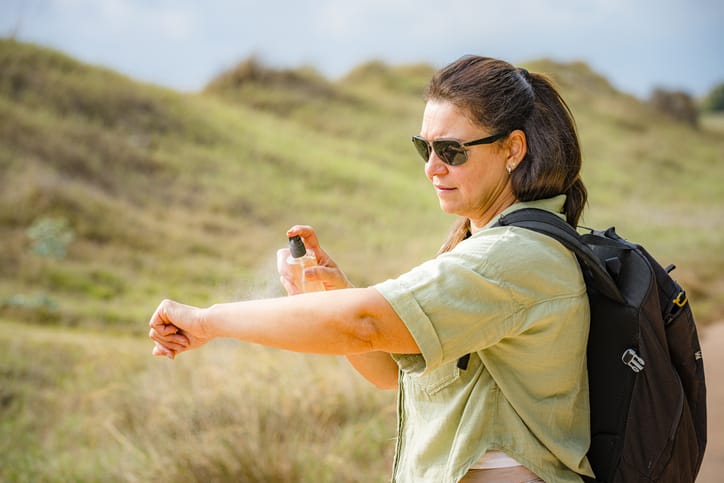There are certain triggers that activate symptoms in people living with systemic mastocytosis (SM). They can vary from person to person, as can the symptoms they activate and their severity. One such trigger is insect bites, which cause an allergic reaction that in the most severe cases can lead to anaphylaxis. Without urgent treatment, anaphylaxis can be fatal. Thankfully, there are steps patients can take to prevent bites and stings and to act quickly if one occurs.
Insect bites as a trigger in SM
Understanding triggers begins with understanding mast cells. Mast cells are a part of the immune system. When allergens or other invaders are present they release histamine and other chemicals into the bloodstream, causing inflammation.
In SM, the body builds up too many mast cells, and they accumulate in the skin and organs. When a person with SM gets bitten or stung by an insect such as a mosquito, honey bee, hornet, wasp, yellow jacket, tick or fire ant, the venom triggers mast cell activity. But because the body has a buildup of mast cells, they release excess chemicals that in turn lead to a variety of symptoms.
Symptoms triggered by insect stings
Symptoms caused by an insect bite can be mild, moderate or severe. They can range from redness and swelling around the sting site, nausea, stomach cramps, headaches and itching to more serious reactions such as hives, swelling of the throat and tongue, difficulty breathing, wheezing, heart palpitations, low blood pressure, dizziness and anaphylaxis, which can lead to possible loss of consciousness or cardiac arrest.
Treating insect bites
When the reaction is mild, the itching and swelling of bug bites and stings can be alleviated with an ice pack, anti-itch cream or an oral histamine.
If more serious symptoms develop, urgent treatment may be required. An insect sting can trigger an allergic reaction within minutes and the onset of anaphylaxis can be rapid. For this reason, people living with SM must carry two injectable doses of epinephrine with them at all times, for use in case of anaphylaxis.
Learn more about SM treatment and care
If symptoms worsen rapidly, epinephrine must be administered immediately. It is also important to call 911 and explain that you are having an anaphylactic reaction and follow the dispatcher’s instructions. You will most likely need to go to the hospital to be checked out.
Preventing insect stings
Avoiding symptom triggers is an important part of living with SM. However, despite best efforts, it’s not always possible to avoid insect stings.
There are some precautions you can take to help prevent insect bites and avoid a potentially life-threatening reaction.
- Avoid areas where insects are rife, such as woods or fields.
- Wear insect repellent with 20% to 30% DEET.
- Don’t wear strong perfumes, soaps or deodorants.
- Wear light-colored natural fibers and cover your arms and legs.
- Sleep with a protective net around your bed in summer.
Sign up here to get the latest news, perspectives, and information about SM sent directly to your inbox. Registration is free and only takes a minute.

